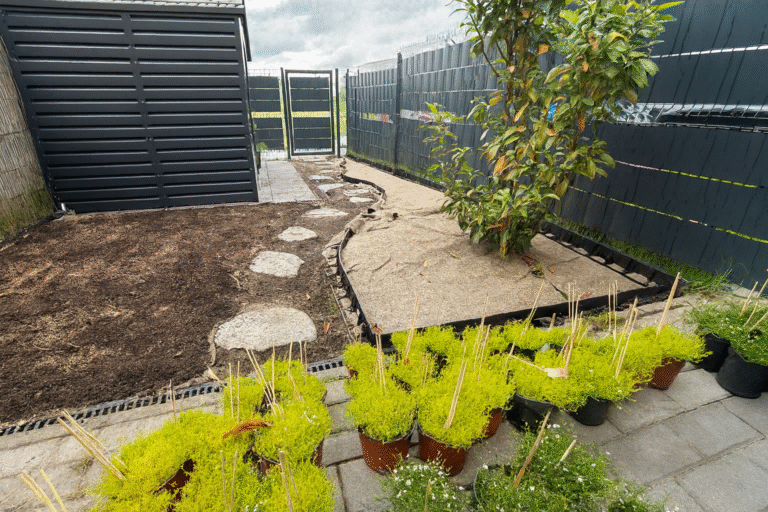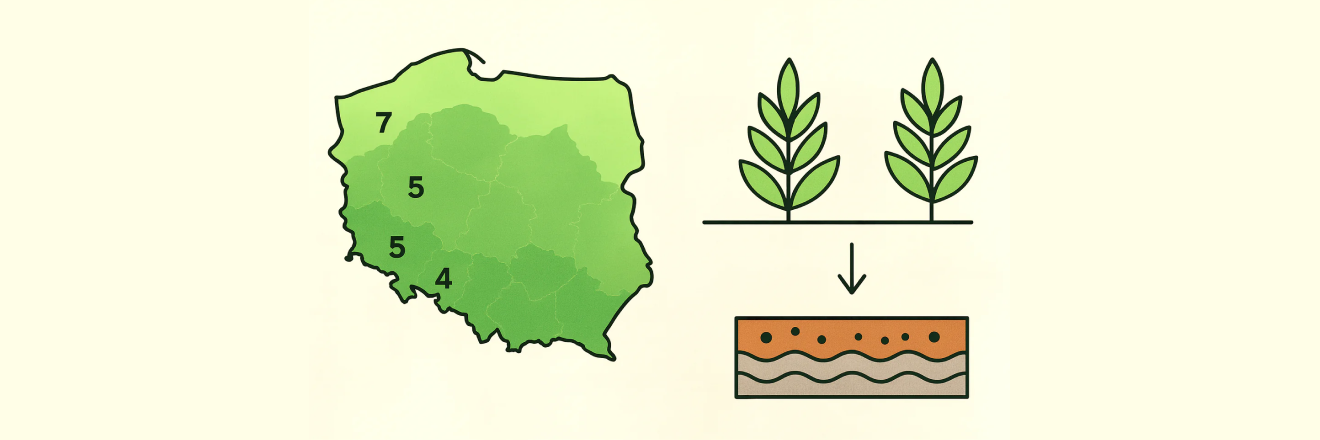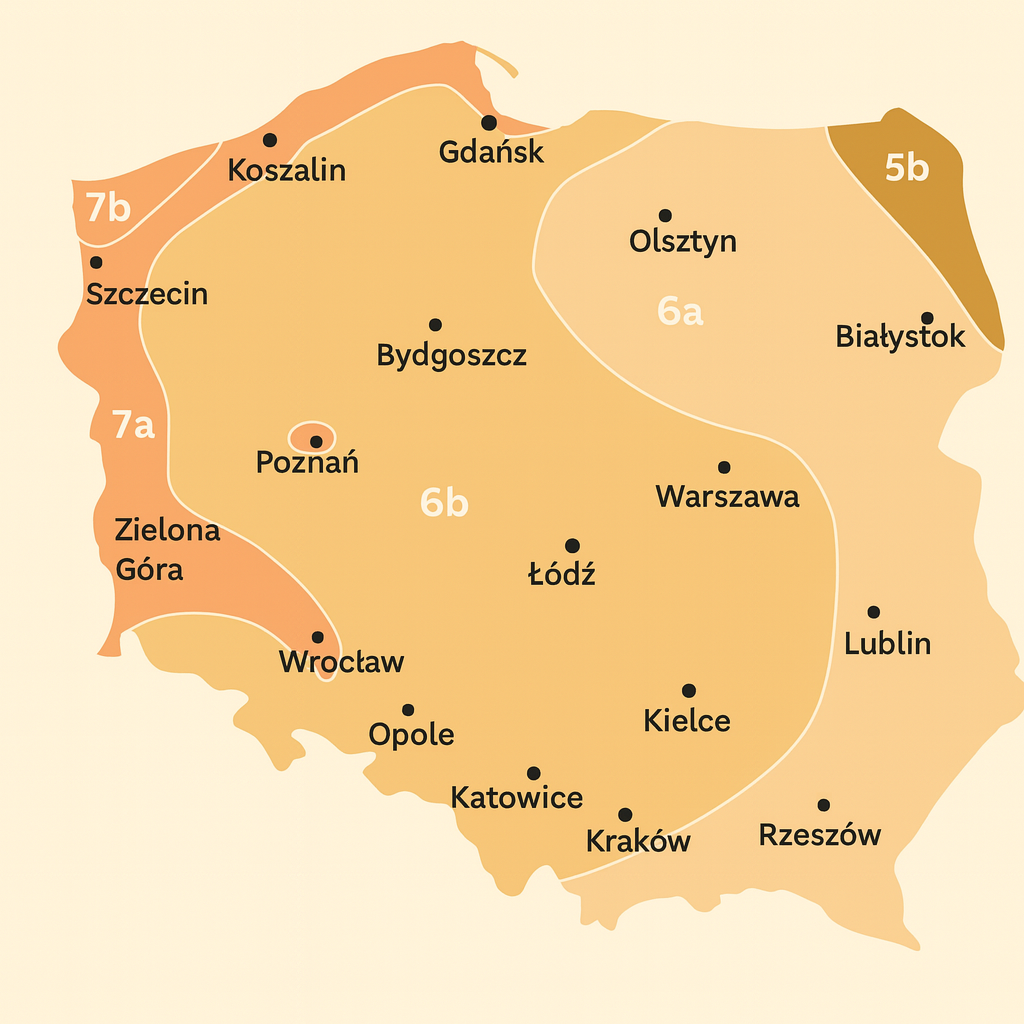In short:
- Soil analysis is the first step toward a lasting garden.
- Check soil permeability before choosing your plants.
- Avoid design mistakes caused by poor understanding of hydrogeological conditions.
- Developer soil often requires correction and proper drainage.
An Open Mind Is the Gardener’s Best Tool
My only authority for writing this guide is an open mind focused on finding solutions.
Throughout my long career in horticulture, I’ve always tried to solve gardening problems by stepping outside conventional frameworks and trends.
For me, the vision of a garden must be closely tied to its hydrogeological and climatic conditions.
These factors can vary even within a single, medium-sized property — let alone across all of Poland.
Climate Conditions and Hardiness Zones
Across Poland, various frost hardiness subzones have developed, which significantly affect plant selection.
Identifying your hardiness zone is simple, but properly analyzing hydrogeological conditions is an art that requires both knowledge and the right tools.
I’m a strong believer in combining science and empirical observation.
Anyone can perform a proper soil analysis if they have the right tools — and an open mind to accept results that may not always be pleasant, as they often require rethinking plant choices.
A Real-World Example: When Project Assumptions Fail
Let me share a case I often encountered in my work.
Client “A” insisted on evergreen species that require high humidity both during and outside the growing season, since these plants continue to transpire in winter.
The designer, who never visited the site, followed the brief and included many evergreens such as cherry laurels, hollies, and bamboos.
However, the site’s soil was highly permeable — water drained completely within 15–30 minutes.
This meant that during hydrological and physiological droughts in winter, these species were at extreme risk of frost damage.
Cold air and wind increase transpiration in evergreens — a fact that may seem counterintuitive but explains why even native spruces have struggled in recent years.
Our winters now often bring no lasting snow cover, temperatures down to -17°C, and very dry early-spring periods.
That combination is disastrous for evergreens — especially exotic ones adapted to climates with more balanced rainfall patterns.
How to Test Hydrogeological Conditions in Your Garden
To understand your soil’s water behavior, empirical testing is key.
Here’s a simple method:
Choose a dry period — at least 7–10 days without rain, between March and November.
Dig a hole one spade deep in several areas of your garden.
Fill it with water and observe how long it takes to absorb:
Around 1 hour – ideal soil permeability.
A few minutes – too permeable (sandy or gravelly).
Several days – too dense or clay-heavy.
These results reveal what types of plants will thrive in your soil — or whether it’s worth improving drainage or replacing soil in the root zone.
You can modify the upper 1–1.5 m of soil to improve permeability, but for low-maintenance gardens, it’s usually wiser to adapt to existing conditions rather than fight them.
The Hidden Trap of Developer Plots
Over my 17 years in horticulture, I’ve noticed a growing number of clients facing serious soil problems — not due to natural change, but due to construction practices.
Developers often move subsoil layers when building foundations, pushing the heavy, less permeable material to the surface.
This soil then gets compacted by heavy machinery, forming a near-impenetrable layer.
Even worse, leftover concrete from construction is sometimes poured along fences — exactly where homeowners want to plant hedges.
Needless to say, concrete isn’t water-permeable, and roots cannot survive in such conditions.
How to Deal with It
Before designing a garden:
- Conduct a thorough site inspection,
- Perform a permeability test in multiple areas,
- Adjust your planting plan accordingly.
For difficult soils:
- Replace the upper layer (1–1.5 m),
- Install drainage systems,
- Choose species suited to local conditions.
A garden design made without a site visit and soil diagnosis is just a concept — and it can easily do more harm than good.
Lessons from Years of Practice
In statistics, we often refer to the Gaussian curve.
If I were to plot all the gardens I’ve worked on, about 60% would fall into the “normal” range of conditions.
However, the clients who turned to me for help usually represented the extremes — the most problematic sites.
This taught me that most garden challenges aren’t caused by nature, but by human intervention in soil structure.
Modern gardening increasingly requires not just botanical knowledge, but also an understanding of geology and construction impact.
Frequently Asked Questions
When should I test soil permeability?
During a dry period, between March and November, after at least 7–10 rain-free days.
Can I improve heavy soil?
Yes. Replace or loosen the top layer, add sand or compost, or install drainage systems.
Which plants tolerate difficult soil conditions best?
Choose native, resilient species such as junipers, barberries, spruces, privets, or pines.
Conclusion
Designing a garden without understanding its hydrogeological and climatic conditions is like building a house without foundations.
Knowing your soil, its permeability, and microclimate is the first step to creating a healthy, sustainable garden that requires minimal intervention.
The best gardens are those that work with nature, not against it.
Kyoto-Style Garden
About the Author
Daniel Słodkiewicz – founder of Zen Spotlight, horticulturist with over 17 years of hands-on experience, and advocate of empirical, nature-aligned garden design.
He combines scientific understanding of soil and climate with a mindful, practical approach to creating resilient green spaces.
Beyond horticulture, Daniel is passionate about East Asian culture, strength training, history, geopolitics, and neurodiversity.
Learn more at
Zen Spotlight








